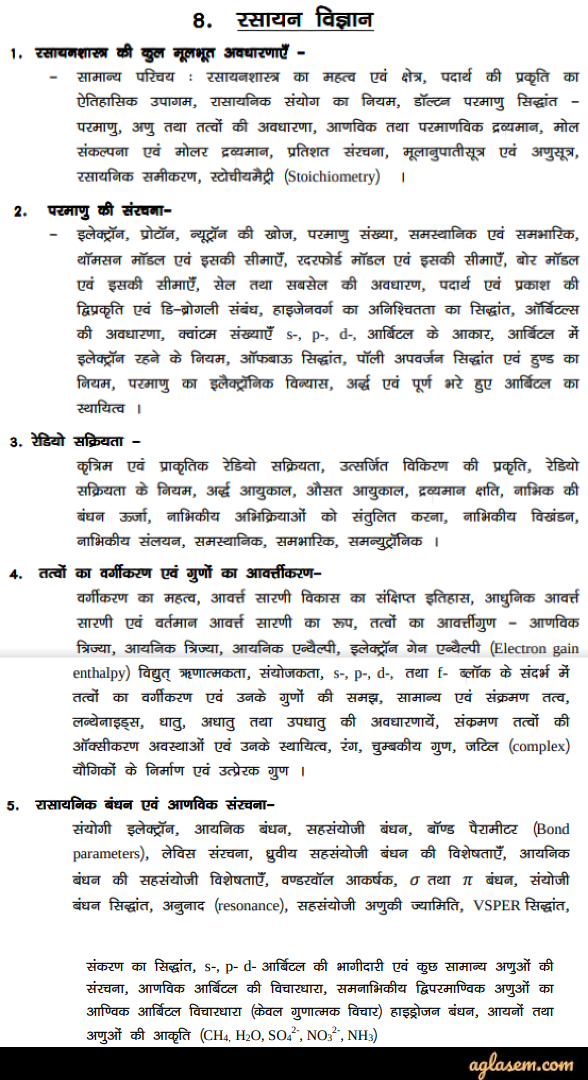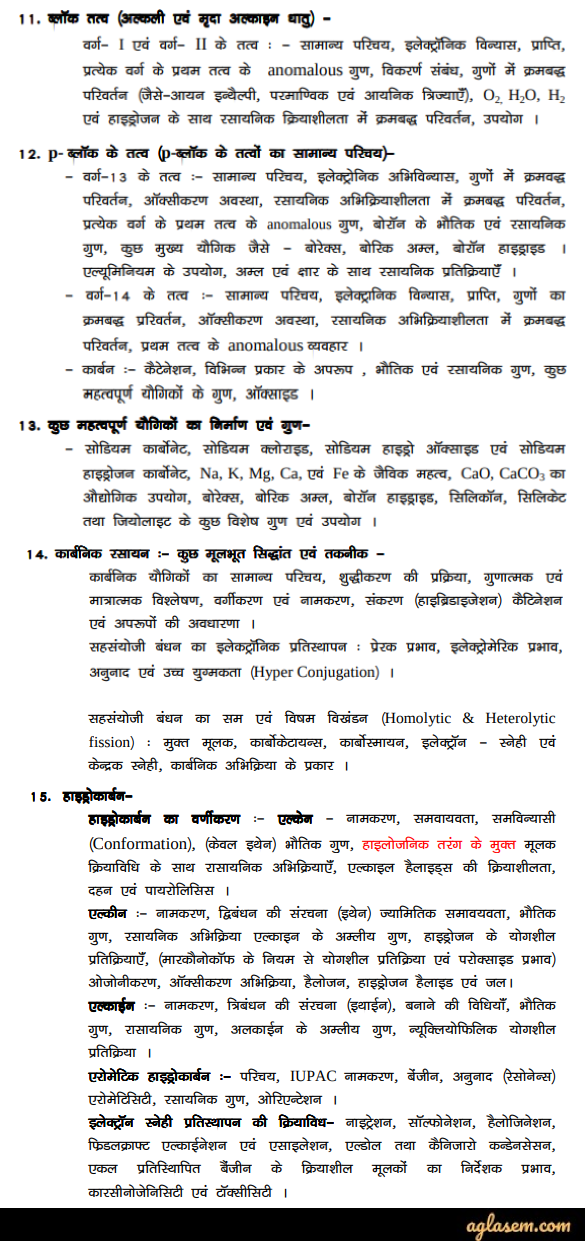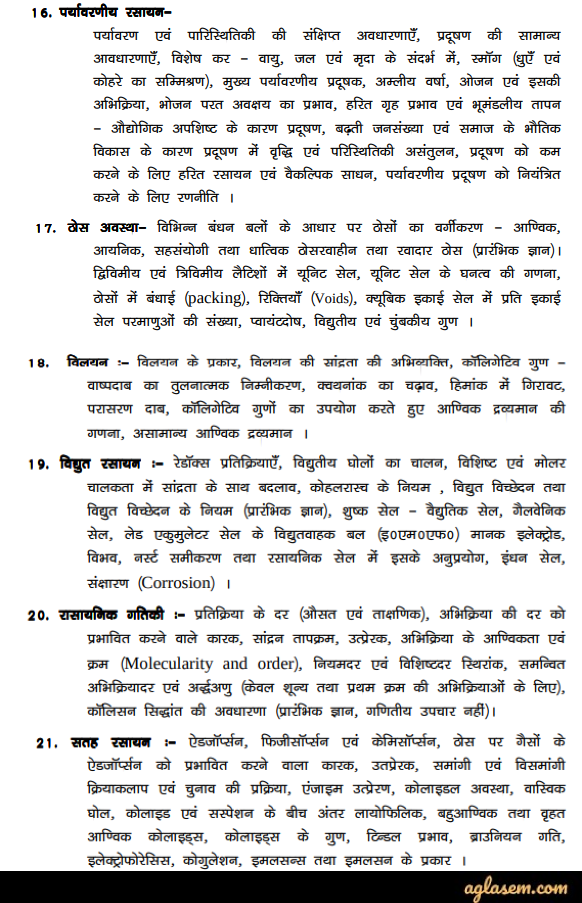Bihar Police Constable Syllabus 2019 : CSBC conducts examination for Bihar Police Constable each year. Selection is done in two rounds- written examination and Physical Evaluation Test (PET). here we are providing you syllabus for first round that is written examination. The syllabus contains 5 topics – Hindi, English, Mathematics, Social Studies (History, Geography, Economics, Political Science) and General science (Physics, Chemistry,Biology). Total marks for written examination is 100 marks. Out of these 100 marks, you have to secure 30% marks (30 marks) to get selected for PET. Candidates can check the details syllabus along with the official PDF of syllabus.
Bihar Police Constable Syllabus 2019
Level of the examination for Bihar Police Constable 2019 will be equivalent to intermediate level. Candidates are advised to go through the syllabus carefully.
Syllabus for Bihar Police Constable
Syllabus is divided into 5 parts- Hindi, English, Mathematics, Social Studies and General Science.
Hindi
Prose section
- Premchand – Poos ki Raat (story)
- Ramchandra shukla – Kavita ki parakh (conceptual essay)
- Kumar Gandharva – Ghartiya gayikayo me bejod: Lata Mangeshkar (Subjective essay)
- Vishnubhat Godse Vasaikar – Ankho Dekha Gadar (Memoirs)
- Satyajit Ray – chaltrit (essay on film)
- Bhola Paswan shastri – Meri Vietnam Yatra (Travelogue)
- Krishna sobti – Sikka badal Gaya (story)
- Phanishwar nath renu – utri swapan pari, hari kranti (report)
- Harishankar parsai – ek dikshant bhashan (sarcasm)
- Odolen Smekal – Surya (sanskrit essay)
- Mehrunnisa parvez – Bhode hue din (story)
- Krishan kumar – Buniyaadi shiksha (Speech)
- Chandradhar sharma Guleri
- Bal Krishan Bhatt
- Shiv pujan sahay
- Ramdhari singh dinkar
- Vishnu Prabhakar
- Agyeya
- Jagdishchandra mathur
- Mohan rakesh
- Namvar singh
- Jayaprakash narayan
- Padma Sachdev
- Dalit Atmakatha
- Uday Prakash
- Pankaj Bisht
- J.Krishan Murti
Verse section
- Vidyapati – chanan bhel visham sar re, saras basant samay bhal paol
- Kabir – Santo dekhat Jag Baurana, ho baleya kab dekhogi tohi
- Mirabai – Jo tum Todo piya, main girdhar ke ghar jau
- Sahjobai – mukut latak man maahi ram taju pae guru na bisaru.
- Bharatendu harishchandra – Bharat durdasha
- Maithilisharan gupt – Jhankaar
- Suryakant tripathi nirala – Todti Pathar
- Nagarjun – bahut dino ke baad
- Trilochan – Galib (Sonet)
- Kedarnath singh – Jagarnath
- Naresh Saxena – prithvi
- Arun kamal – matrabhoomi
- Jayasi
- Surdas
- Nabhadas
- Taj bibi /Chand bibi
- Dhananand
- Bhushan
- Subhadra kumari chauhan
- Jaishankar prasad
- Shamsher bahadur singh
- Muktibodh
- Raghuvir sahay
- Rajkamal chaudhary
- Vinod Kumar Shukla
- Gyanendrapati
- Gagal gil
English
- Preparing note and summary of the given passage.
The text will deal with socio-political and cultural issues, principles enshrined in constitution. You have to identify the central idea of the given passage.
- Comprehension of unseen passages (factual / imaginative )
Developing reasoning skills and drawing the inference.
- Short stories/tales/ short plays reading
Understand and imbibing virtues while reading.
- Reading informative essay/pieces
On environment, economics, sports, science, health and hygiene, human value and human rights, cultural diversity and unity. Reading with understanding.
- Reading and understanding poems for the enjoyment
World famous poets, Indian poets, Bihari poets, and understanding of poems and imbibing human values.
- Free composition on contemporary or familiar issues
Skills in writing notices, formal, informal letters, application, etc.
- Various registers of English
Standard pieces of writing, build competences in various registers of English.
- Translation from the mother tongue into the English language.
Ability to translate language mother tongue into English language and vice versa.wide ranging topics covering aspects of life.
- Grammatical structures and items
Analysis, phrases and idioms, tense, reported speech, modal auxiliaries, passive forms, etc.
- Summary of a given passage
Identifying the central idea of the passage. Informative pieces on burning issues.
- Comprehension of unseen passage/graph/chart/table
Developing reasoning skills, texts should deal with socio-political and cultural issues.
- Reading of short stories/tales/short plays
Reading and understanding. Indian writer, Bihari writers, native and non-native writers.
- Reading of informative pieces or essays
Reading and understanding general knowledge of practical values. On art and culture, mass media, etc
- Reading poems for understanding and enjoyment
Enjoying, reading, imbibing truth and values of the poems.
- Free composition on contemporary issues
Communicative skills in writing reports, CV, messages, etc.
- Various registers of English (contd.)
Build communicative competences in various registers of English.
- Translation from the mother tongue into English
Translating mother tongue into English language and vice versa.
Mathematics
Unit 1
- Combination
- Relationship and function
- Mathematical logic
- Boolean algebra
Unit 2
- Sequence and range
- Complex number
- Quadratic equations and expressions
- Mathematical arrival theory
- Binomial theorem
- Linear inequalities
Unit 3
- Trigonometry
Unit 4
- Regulatory geometry
- Cone block
- Introduction to three dimensional geometry
Unit 5
- Calculus
Unit 6
- Numeric
- priority
Social Studies
History
Unit 1
- Prehistory, protohistory, and history
Meaning, scope, relevance, sources, periodization, sites, tools, equipment.
Unit 2
- The prehistoric world
Harappan civilization, material life, socio-religious life, urban traits, etc.
Unit 3
- Ancient civilization
Early Indian religion (Vedic, Jain, Shaivism, etc), Mesopotamia, Rome, china, Greece, slavery and the position of women.
Unit 4
- The medieval order
Political and modern history of mauryan (rise of magadh, growth of patliputra, mauryan stone pillars), feudalism, state and church.
Unit 5
- Vehicles of modernization
Post Mauryan to gupta period Culture and economy. Ideas, institutions and events, reformation, renaissance, inventions in science and technology.
Unit 6
- Modernization affirmed
The british experience, economy society and culture during the early medieval period, revolution of 1688, industrial revolution, french revolution, varna and caste system, Agrarian relations.
Unit 7
- Spread of modernisation
Europe- Greece, Italy, Germany, Turkey, Asia – China, Japan, Iran, India, political changes under sultanate, a brief survey of the ruling dynasty.
Unit 8
- Ills of modernity
Indo-islamic culture, the first world war, colonialism and neocolonialism in Asia, Africa, and western world, dress and lifestyle, art and architecture.
Unit 9
- Three Ideologies and their mutual conflict
Capitalism, socialism/communism, nazism/fascism, the Second World war, crafts, trades, urban centres (towns of Bihar).
Unit 10
- Sanity vs motivated politics
League of nations, UNO, cold war, decolonisation, non-aligned movement, bhakti and sufi movement (leading saints and their saying), characteristic and their features, contribution to Indian culture.
Unit 11
- Post modernization/further changes
Globalisation, revenue settlement, economic impact, policies of expansion, rule of EIC, breakup of USSR, the chinese experience.
Unit 12
- The revolt of 1857
Causes, nature, and effects of the revolt. Role of Kunwar Singh in Bihar.
Unit 13
- The Indian awakening in the 19th century
Points of self introspection, dimensions of international consciousness development, important personalities and organization.
Unit 14
- The nationalist movements (1918 – 1947)
Non cooperation movement, civil disobedience movement, quit india movement, the naval mutiny, NB- activities of Bihar must be mentioned.
Unit 15
- Partition and independence
Wavel plan, Mountbatten plan, Indian independence act, pangs of partition, Muslim league and the two-nation theory.
Unit 16
- Visions of the new state
Making of the constitution, reorganization of states, 5 year plan and missed economy, non-alignment.
Geography
Fundamentals of Physical Geography
Unit 1: Geography as a discipline
Nature and scope, science and spatial attribute, branches of geography and importance of physical geography.
Unit 2: Earth
origin , evolution and interior of Earth, Wegener’s continental drift theory and plate tectonics, geological processes like earthquakes and volcanoes.
Unit 3: Landforms
Minerals, rocks, types of rocks and its characteristic, Geomorphic process – weathering and erosion, landforms and its types.
Unit 4: Climate
Elements of weather and climate, heat budget, pressure belts, greenhouse effect, heating and cooling of the atmosphere, air masses and fronts, cyclones, condensation and evaporation, problems of global warming, insolation.
Unit 5: Hydrosphere oceans (water)
Hydrological cycle, study of submarine relief, distribution of salinity and temperature, movements of ocean water wave, tides, current.
Unit 6: Biosphere
Ecosystem, role of man in ecological imbalance, human and environmental effects.
Economic Geography
Unit 1: Resource
Meaning and scope, concept, classification and conservation.
Unit 2: Man and environment
Equatorial, monsoon and tropical region, temperate grassland, human life.
Unit 3: Main crops of the world
Grains, cash crops, plantation, milk production, geographical conditions, distribution and world trade of different crops.
Unit 4: Major industries of the world
Utility and distribution of iron ore, cotton textiles, factors of industrialization and its effects on the economy.
Unit 1: Fundamentals of human geography
Nature and scope
Unit 2: People
Population of world, distribution, density, growth, population change, spatial pattern and structure, age and sex ratio, rural and urban composition, human development, selected indicators, international comparison.
Unit 3: Human Activities
Primary, Secondary, Tertiary Activities, Quaternary Activities.
Unit 4: Transport, communication, and trade
Land transport, satellite communication, cyber zone, international technology.
Unit 5: Human Settlement
Types, characteristics and problems, rural and urban, the morphology of cities, problems related to human settlement.
Unit 1: Introduction
Location, neighborhood relation, and place of India in the world,
Unit 2: Physical aspects and drainage system
Physiography, relief, physical division, and drainage system.
Unit 3: Climate, vegetation and soil
Weather and climate, distribution of pressure, temperature, winds and rainfall, Indian monsoons, wildlife conservation, soil, ICAR classification, their distribution, and conservation.
Unit 4: Resources and development
Land , water and mineral resources.
Unit 5: Transport, communication and international trade.
Roadways, railways, waterways, gas and oil pipeline, National electricity grid.
Unit 6: Population
Distribution, density, and growth, rural and urban population, composition of population, language and religion.
Unit 7: Natural hazards and management
Flood, drought, earthquake, volcano, landslide, cyclone, tsunami.
Politics
Unit 1: Concepts of politics
Nature, definition and scope of political science, traditional and modern view, relation of political science with other social sciences, constitutional development, sources of constitution, constituent assembly, preamble.
Unit 2: State
Definition, essential elements of state, salient features of Indian constitution.
Unit 3: Theories of the origin of the state
Divine theory, force theory, social contract theory, evolutionary theory, working of federalism in India (controversial issues, aims and characteristics of federal state, unitary features).
Unit 4: Sovereignty
Definition, characteristics, kinds, Characteristics of monistic & pluralistic, impact of globalisation, fundamental rights and duties.
Unit 5: Key concepts
Law, liberty, justice, equality, rights, duties, directive principle of state.
Unit 6: Union executive
Power and function of President, vice-president, council of ministers and prime minister.
Unit 7: Parliament
Composition, Power and function of Lok sabha and Rajya sabha.
Unit 8: State executive
Power, function, duties and role of chief minister, council of ministers and governor.
Unit 9: Indian judiciary
Organisation and function of Supreme court of India and Patna high court.
Unit 10: State legislature
Composition, Power and function of bihar legislative assembly and Bihar legislative council.
Unit 11: Electoral system in India
Election commission, electoral process, importance of Voting , party system and role of opposition.
Unit 12: Working of local self government (special reference to Bihar)
Bihar Panchayati Raj (amendment) act 2006, rural and urban local government, 73rd and 74th constitutional amendments.
Unit 13: National integration and challenges
Communalism, regionalism, Casteism , Naxalism.
Unit 14: Foreign policy of India
Determinants, basic principles ( special reference to nuclear policy) , NAM,SAARC, UNO.
Economics
- Introduction
statistical tools and interpretation, Presentation , Collection, organisation of data.
- Economic Development of Bihar & India
Development Policies and Experience, Economic Reforms since- 1991 , Current Challenges Facing Economy of Bihar and India, Development Experience of Bihar: A comparison with other states, Development Experience of India: A comparison with neighbours.
- Introductory microeconomics
Producer Behaviour & Supply ,consumer Behaviour and Demand, Forms of Market and Price Determination, Simple applications of Tools of demand and supply Curves.
- Introductory macroeconomics
Money and Banking, National Income and related aggregates,International Trade Determination of Income and Employment, Government Budget and Economy.
5. General Science
Physics
- Physical World & Measurement
Physics, need of measurement,dimension of physical quantities.
- Kinematics
Scalar and vector quantities, motion in a plane, cases of uniform velocity and uniform acceleration, Motion in a straight line, speed and velocity, uniform and nonuniform motion, average speed, etc.
- Laws of motion
Equilibrium of concurrent forces, static and kinetic friction, dynamics of uniform circular motion, intuitive concept of force, newton’s law of motion, law of conservation of linear momentum, etc.
- Work, Energy and power
Scalar product of vector work done by a constant force and a variable force, notion of potential energy, conservative forces, non conservative forces, conservation of mechanical energy, elastic and inelastic collisions in one and two dimensions.
- Motion of System of Particles & Rigid Body
Centre of mass of two particle system, radius of gyration, momentum, conservation and centre of mass motion,momentum of force, Equilibrium of rigid bodies, comparison of linear and rotational motion, moment of inertia, vector product of vectors, torque, angular momentum, etc.
- Gravitation
Keplar’s law, law of gravitation, acceleration due to gravity, gravitational potential energy, gravitational potential, escape velocity, orbital velocity of satellite.
- Properties of bulk matter
Effect of gravity on fluid pressure,Viscosity, Stoke’ law, terminal velocity, surface tension and its application, Pascal’s law and its application, stress-strain relationship, Hooke’s law, Young’ modulus, etc.
- Heat & Thermodynamics
Heat, temperature, thermal expansion, heat transfer, first law of thermodynamics, second law of thermodynamics, reversible and irreversible changes.
- Kinetic Theory of Gases and Behaviour of Perfect Gas
Kinetic theory of gases, work done on compressing a gas,equation of state of a perfect gas.
- Oscillations & Waves
Periodic motion, Wave motion, longitudinal and transverse waves, principle of superposition of waves,Doppler effect, beats,reflection of waves,etc
- Electrostatics
Electric charge and their conservation, superposition principle and continuous charge distribution, coulomb’s law, electric field, electric field lines, electric dipole,Electric flux, statement of Gauss, Conductors and insulators, etc.
- Current electricity
Kirchoff’s laws and simple applications, potentiometer, Electric current flow of electric charges in a metallic conductor, Ohm’s law, electric resistance, etc.
- Magnetic Effects of Current and Magnetism
Ampere’s law and its applications, Concept of magnetic field, force on a current carrying conductor in a uniform magnetic field, etc.
- Electromagnetic Induction and Alternating Currents
Electromagnetic induction, faraday’s law, Lenz law, self and mutual inductance, need for displacement current, AC generator and transformer, etc.
- Electromagnetic waves
Electromagnetic waves and their characteristics, electromagnetic spectrum, x rays, gamma rays including elementary facts about their uses.
- Optics
Reflection of light, spherical mirrors, scattering of light, optical instruments, wave optics, etc.
- Dual nature of Matter and Radiation
Matter waves, photoelectric waves, Hertz and Lenard’s observations, etc.
- Atoms & Nuclei
Rutherford model of atom, composition and size of nucleus, isotopes, isobars, isotones, alpha particle scattering, bohr model, etc.
- Electronic Devices
Semiconductors, amplifier, logic gates ( OR, AND, NOT, NAND and NOR),Transistor as a switch, etc.
- Communication Systems
Elements of communication system, satellite communication system and its uses, etc.
Chemistry






Biology



About Bihar Police Constable
Central selection board of constable conducts entrance examination for the recruitment of Bihar Police constable. Selection process is done in 2 rounds – written examination and physical evaluation test (PET). After PET, selected candidates have to go through medical examination on which final selection is done. To be eligible for the written examination, candidates have to pass an intermediate (10+2) and its equivalent. Syllabus consists of sections which consists maths, english , hindi, general science, social studies. Passing marks for written examination is 30% i.e 30 marks out of 100 marks.
Official Website: csbc.bih.nic.in
